BIAF 2017 - Biennale Internazionale dell'Antiquariato di Firenze

Cantore Galleria Antiquaria - Orazio Samacchini, Riposo durante la fuga in Egitto, olio su tavola, cm 81x62
Dal 23 September 2017 al 1 October 2017
Firenze
Luogo: Palazzo Corsini
Indirizzo: via del Parione 11
Orari: dalle 10,30 alle 20,00. Giovedì 28 settembre 2017 dalle ore 10,30 alle 19
Costo del biglietto: intero € 15, ridotto € 10
Sito ufficiale: http://www.biaf.it/
Il 23 settembre apre i battenti la trentesima edizione della Biennale Internazionale dell’Antiquariato di Firenze e ancora una volta sarà ospitata nei saloni barocchi di Palazzo Corsini, affacciato su uno dei lungarni più belli della città.
Gli organizzatori sono da tempo al lavoro, sotto l’attenta regia del Segretario Generale, Fabrizio Moretti, per porre nuovamente sotto i riflettori internazionali il mercato dell’antiquariato italiano ed offrire ad un pubblico sempre più attento un’edizione ricca di novità e sorprese.
Per accogliere le oltre 3.000 opere esposte e le oltre 80 gallerie italiane e straniere, Palazzo Corsini si presenterà con un nuovo allestimento, quest’anno affidato alla vena creativa di Matteo Corvino, noto interior designer e scenografo veneziano. Un progetto work in progress che si apre alla modernità e che sarà reinterpretato già dalla prossima edizione. L’intento è di fornire ai visitatori una sempre maggiore visibilità delle architetture seicentesche di Palazzo Corsini con l’utilizzo di un soffitto di vetro per il percorso centrale garantendo una maggiore luminosità agli spazi interni del palazzo, mentre, dalla terrazza di Palazzo Corsini, si potrà ammirare la ricostruzione di un giardino pensile all’italiana realizzato con bordure di bosso.
L’inedito allestimento ospiterà opere scrupolosamente selezionate e vagliate da un’autorevole Commissione Scientifica internazionale di esperti (Andrea Bacchi, Massimo Bartolozzi, Sandro Bellesi, Daniele Benati, Mauro Berti, Silvestra Bietolet, Andrew Butterfield, Simone Chiarugi, Enrico Colle, Frederik J. Duparc, David Ekserdjian, Maria Cecilia Fabbri, Carlo Falciani, Arturo Galansino, Aldo Galli, Giancarlo Gentilini, Richard Knight, Francesco Leone, Dora Liscia Bemporad, Jean-Patrice Marandel, Paola Marini, Fernando Mazzocca, Luca Mor, Claudio Pizzorusso, Nicoletta Pons, Giovanni Pratesi, Carmen Ravanelli Guidotti, Scott J. Schaefer, Eric Schleier, Davide Sestieri, Nicola Spinosa, Carl Strehlke, Maria Cristina Terzaghi, Roberto Valeriani, Marco Voena).
Ampliando i suoi confini temporali fino agli anni Ottanta del secolo scorso, l’edizione 2017 prosegue l’apertura verso l’arte contemporanea – già intrapresa nella passata edizione con l’installazione di Pluto e Proserpina, una scultura in acciaio dorato di tre metri d’altezza dell’artista americano Jeff Koons, esposta sull’arengario di Palazzo Vecchio in Piazza della Signoria – con l’artista svizzero Urs Fischer, un progetto artistico di Fabrizio Moretti e Sergio Risaliti, a cura di Francesco Bonami e realizzato con la collaborazione di Mus.e e del Comune di Firenze.
Ancora una volta, sarà quindi una Biennale aperta alla città e in stretta sinergia con le principali istituzioni fiorentine, così da offrire ai visitatori un ricco programma di eventi in molti dei luoghi simbolo del centro cittadino, diventando l’occasione per scoprire le bellezze di Firenze sotto una nuova luce. Tra le iniziative, la mostra “Un incontro tra tardo gotico e contemporaneità: Pietro di Chellino e Pietro Annigoni” con opere della Fondazione Cassa di Risparmio di Firenze, che, nell’ambito dei festeggiamenti per i 25 anni di attività, esporrà a Palazzo Corsini nei giorni della BIAF alcuni tesori della sua preziosa collezione d’arte.
Inoltre, uno speciale percorso congiunto, in collaborazione con Palazzo Strozzi, permetterà di ammirare alcune delle opere più rappresentative dell’arte italiana e non solo a prezzo scontato. Infatti, i visitatori della Biennale godranno di una riduzione sul biglietto d’ingresso alla mostra “Il Cinquecento a Firenze. Tra Michelangelo, Pontormo e Giambologna”. E lo stesso varrà per i visitatori della mostra di Palazzo Strozzi, che potranno ammirare le opere della 30° Biennale Internazionale dell’Antiquariato ad un prezzo ridotto.
Per la serata di venerdì 29 settembre è in programma un charity event, la cena nel Salone del Trono di Palazzo Corsini, in favore di Engera – Africa Caring People ONLUS, organizzazione che lavora per la tutela della salute della popolazione etiope, in occasione della quale un prestigioso personaggio dello spettacolo sarà il battitore d’eccezione di un’asta di pregiati oggetti offerti dagli espositori della Biennale.
Il 1° ottobre invece la Biennale si tingerà di rosa e ospiterà la Onlus Firenze in Rosa, Associazione che si propone di divulgare e promuovere una “cultura” della prevenzione del tumore al seno, attraverso la promozione della salute e di corretti stili di vita nonché della riabilitazione psico-fisica post-intervento.
Le prime anticipazioni sulle opere in mostra a Palazzo Corsini dal 23 settembre al primo ottobre già consentono di immaginare un’edizione ricchissima di spunti per ogni tipologia di collezionisti.
Tra le maggiori attrazioni figurerà certamente la Buca per le denunce segrete in marmo di Verona, opera seicentesca presentata dalla romana Galleria W. Apolloni. Ancora, la Galleria Michel Descours proporrà Il ritratto dell’attore teatrale Tiberio Fiorilli nel ruolo di Scaramouche di Pietro Paolini, appartenuto al fratello dell’attore. La Galleria Alberto di Castro esporrà invece un gruppo di importanti disegni inediti preparatori per l’esecuzione di un fregio della campana in bronzo della Basilica di San Pietro, realizzati dalla Bottega di Luigi Valadier, mentre W&K Wienerroither & Kohlbacher presenterà una collezione di disegni di Gustav Klimt, tra i quali uno studio per la celebre Salomé. Sempre tra i disegni, ricordiamo uno studio di nudo virile del Tintoretto, presentato da Enrico Frascione. Carlo Orsi esporrà un commesso di pietre dure su ardesia realizzato dall’Opificio delle Pietre Dure di Firenze all’inizio del XVII secolo, che rappresenta Il ritorno dalla fuga in Egitto, con intarsi in avorio, acero, palissandro ed ambra; Dario Ghio, Il cammeo con busto dell’amato Luigi XIV, che svela un volto poco noto di colei che non solo lo ha posseduto ma anche finemente cesellato: la Marchesa di Pompadour.
A rappresentare la pittura, con opere d’eccezionale qualità e provenienza, sarà Colnaghi, con una serie di nature morte antropomorfe raffiguranti le stagioni di Giovanni Paolo Castelli detto Lo Spadino; la Galleria Lullo Pampoulides, per la sua prima partecipazione alla Biennale, proporrà invece una Battaglia tra greci e romani di Livio Mehus, mentre la Galleria Cantore esporrà il Riposo durante la fuga in Egitto di Orazio Samacchini, documentato in Collezione Giustiniani e nella Collezione Imperiale Hohenzollern. Nello stand di Giovanni Sarti segnaliamo una battaglia tratta da un episodio della vita di Giulio Cesare del Maestro di Marradi, dipinta alla fine del 1400. La Galleria Lumina proporrà il ritratto di Orazio Piccolomini di Justus Suttermans, appartenuto alla Granduchessa Vittoria della Rovere. La Galleria Berardi punterà su Karl Brullov, principale artista russo dell’Ottocento al servizio di una delle committenze più prestigiose e presente anche in Italia, con il Ritratto di Anatoly Demidov a cavallo. Tra i dipinti dell’800 si segnala Il gioco delle bocce di Raffaello Sorbi, pittore fiorentino presentato da Matteo Salamon. Passando al Novecento, la Galleria Francesca Antonacci Damiano Lapiccirella presenterà una tela di Cagnaccio di San Pietro, uno dei maggiori iperrealisti italiani, con La Lettera, del 1925, che ritrae due donne intente a leggere la propria corrispondenza, immerse in una luce ferma e rarefatta. L’olio su tela di grandi dimensioni, Primavera fiorentina, di Plinio Nomellini, proveniente da una collezione privata tedesca e mai esposto pubblicamente dal 1922, sarà invece proposto da Paolo Antonacci Antichità.
Egualmente rappresentata sarà la scultura. Meheringer Benappi porterà a Firenze una scultura cinquecentesca di Giovanni Angelo Del Maino raffigurante San Giovanni Evangelista, mentre Giovanni Pratesi presenterà una scultura in marmo di Battista Lorenzi raffigurante Virtù che vince il vizio. Dalla Galleria Botticelli arriverà la terracotta di Benedetto Buglioni raffigurante Cristo Redentore del 1510-1520. Riccardo Bacarelli esporrà un Ritratto di uomo in terracotta di Gaetano Merchi del 1783, mentre Tomasso Brothers un bronzo di Massimiliano Soldani Benzi Ganimede e l’Aquila. Altomani & Sons sarà a Palazzo Corsini con un Busto in porcellana bianca del Marchese Carlo Andrea Ignazio Ginori, modellato da Gaspare Bruschi per la Manifattura Ginori di Doccia alla metà del 1700. Da Longari Arte Milano si potrà ammirare un bassorilievo in terracotta raffigurante la Madonna con il Bambino benedicente del tipo detto ‘Madonna Morgan’ realizzato da Mino da Fiesole e bottega. La Galleria Carlo Virgilio presenterà Endimione dormiente, un marmo di Carrara attribuito a Virgilio Aristodemo Costoli e la Galleria Orsini una coppia di sculture antropomorfe bifronti raffiguranti Antinoo-Osiride di ispirazione esoterico-massonica.
Per quanto riguarda gli arredi, Piva & C. esporrà una coppia di divanetti veneziani, laccati con motivi floreali della seconda metà del XVIII secolo, mentre nello stand di Alessandra di Castro si potrà ammirare una coppia di comodini con alzata e inginocchiatoio realizzati a Roma nella metà del XVIII secolo.
Alla luce di queste prima anticipazioni, è facile comprendere il clima di attesa che è già possibile respirare tra collezionisti e addetti ai lavori.
BIAF 2017 si avvale del contributo della Fondazione Cassa di Risparmio di Firenze, Main sponsor: Toscana Aeroporti, AXA ART.
“Con la Biennale dell’Antiquariato di Firenze AXA Art ha in comune un’autentica passione per l’arte che si traduce concretamente in protezione e sicurezza del patrimonio. Per questo motivo, per il secondo anno, siamo a fianco della BIAF, di galleristi e collezionisti, come main sponsor oltre che partner tecnico”.
Italo Carli – Direttore Generale AXA Art Italia
‘’La nostra Istituzione è lieta di partecipare per la prima volta alla Biennale in una forma ‘diretta’ presentando due dei suoi tesori più preziosi: otto capolavori di Pietro Annigoni e una pala quasi sconosciuta di Pietro Chellino che in questi mesi è in restauro ‘in diretta’ cioè davanti al pubblico, proprio nella nostra sede’’.
Donatella Carmi – Vice Presidente Fondazione CR Firenze
Partners: Federalberghi Firenze, Fratelli Piccini, Pineider, Porsche e Centro Porsche Firenze, Stefano Ricci, Dr. Vranjes.
Media partners: Antiquariato, Apollo, Artribune, Artslife.
SCARICA IL COMUNICATO IN PDF
COMMENTI

-
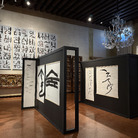 Dal 8 November 2025 al 11 January 2026
Venezia | Museo Correr
Dal 8 November 2025 al 11 January 2026
Venezia | Museo Correr
CARATTERI. Calligrafia e tipografia: Corea del Sud e Stati Uniti
-
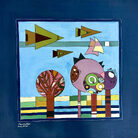 Dal 8 November 2025 al 22 February 2026
Brescia | Museo di Santa Giulia
Dal 8 November 2025 al 22 February 2026
Brescia | Museo di Santa Giulia
Material for an Exhibition. Storie, memorie e lotte dalla Palestina e dal Mediterraneo
-
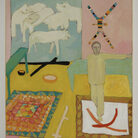 Dal 8 November 2025 al 18 January 2026
Perugia | Perugia, Spoleto e Gubbio
Dal 8 November 2025 al 18 January 2026
Perugia | Perugia, Spoleto e Gubbio
Mimmo Paladino. Antologica
-
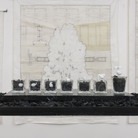 Dal 7 November 2025 al 25 January 2026
Roma | Museo Carlo Bilotti Aranciera di Villa Borghese
Dal 7 November 2025 al 25 January 2026
Roma | Museo Carlo Bilotti Aranciera di Villa Borghese
Silvia Scaringella. Deus sive natura
-
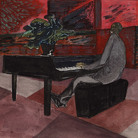 Dal 5 November 2025 al 1 March 2026
Asti | Palazzo Mazzetti
Dal 5 November 2025 al 1 March 2026
Asti | Palazzo Mazzetti
PAOLO CONTE. Original
-
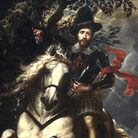 Dal 28 October 2025 al 15 February 2026
Brescia | Pinacoteca Tosio Martinengo
Dal 28 October 2025 al 15 February 2026
Brescia | Pinacoteca Tosio Martinengo
Peter Paul Rubens. Giovan Carlo Doria a cavallo


